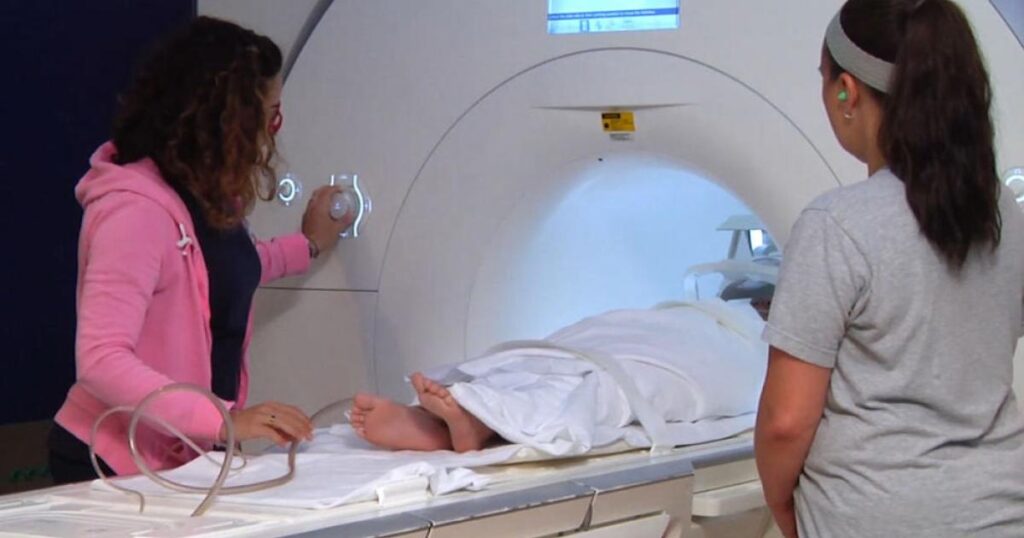CT scan Sedation
Overview
At Indotaj Medical Center in Tajikistan, we prioritize patient comfort and safety during CT scans, and in some cases, sedation may be recommended to enhance the patient experience. The decision to use sedation during a CT scan is individualized and based on factors such as patient anxiety, claustrophobia, age, and the nature of the procedure. The goal is to ensure a relaxed and stress-free experience.

Why it's done
CT scan sedation may be considered for various reasons to ensure a more comfortable and anxiety-free experience for certain individuals undergoing the procedure. Here are common reasons why CT scan sedation may be recommended:
Claustrophobia:
- Individuals with claustrophobia, an intense fear of enclosed spaces, may find the confined space of the CT scanner challenging. Sedation can help relax and alleviate anxiety in such cases.
Anxiety or Fear:
- Patients who experience significant anxiety or fear related to medical procedures, especially those involving tight spaces or equipment noise, may benefit from sedation to make the experience more tolerable.
Pediatric Patients:
- Children, particularly younger ones, may have difficulty remaining still during a CT scan. Sedation can help keep them calm and cooperative, ensuring the success of the imaging procedure.
Intellectual or Developmental Disabilities:
- Individuals with intellectual or developmental disabilities may find it challenging to understand or cooperate with the requirements of a CT scan. Sedation can facilitate a more cooperative and stress-free experience.
Inability to Remain Still:
- Some medical conditions or situations may make it difficult for a patient to remain still during the scan, affecting the quality of the images. Sedation helps in achieving the necessary stillness for accurate imaging.
Lengthy Procedures:
- For CT scans that involve prolonged periods of immobility, sedation may be considered to enhance patient comfort and cooperation.
Specialized Procedures:
- Certain CT scans, such as those requiring injection of contrast dye or specific positioning, may benefit from sedation to optimize the procedure and obtain high-quality images.
Patient Preferences:
- In cases where patients express a strong preference for sedation to enhance their comfort and reduce stress, healthcare providers may consider this option.
Risk
While CT scan sedation is generally considered safe when administered by trained healthcare professionals in a controlled environment, it does carry certain risks and considerations.
- Adverse Reactions to Medications
- Respiratory Complications
- Cardiovascular Effects
- Delayed Recovery
- Aspiration
- Interaction with Other Medications
- Allergic Reactions to Contrast Dye
- Complications in Certain Patient Groups
- Rare Anesthetic Risks
How do I get ready for CT scan Sedation?
Getting ready for a CT scan with sedation involves careful preparation and communication with your healthcare provider. Here are general guidelines to help you prepare for a CT scan with sedation:
- Consultation with Your Healthcare Provider: Schedule a consultation with your healthcare provider to discuss the need for sedation during the CT scan. Provide information about your medical history, any existing health conditions, allergies, and medications you are currently taking.
- Fasting Instructions: Your healthcare provider may provide specific fasting instructions before the CT scan. Typically, you will be asked not to eat or drink anything for a certain period before the procedure. Follow these instructions carefully to reduce the risk of complications, especially if general anesthesia will be used.
- Medication Review: Inform your healthcare provider about all medications, including prescription medications, over-the-counter drugs, and supplements you are taking. Some medications may need to be adjusted or temporarily stopped before the procedure.
- Allergies and Sensitivities: Discuss any known allergies or sensitivities you have, particularly if contrast dye is being used. This information is crucial to prevent allergic reactions.
- Review of Health Conditions: Inform your healthcare provider about any chronic health conditions, such as respiratory, cardiovascular, or neurological disorders. This information helps in assessing the risk factors associated with sedation.
- Coordinate with Anesthesia Team: If the CT scan involves deep sedation or general anesthesia, you may need to coordinate with the anesthesia team. They will provide specific instructions about fasting, medication adjustments, and pre-sedation protocols.
- Arrange Transportation: Sedation can temporarily affect your coordination and judgment. Arrange for a responsible adult to accompany you to the medical center, and plan for transportation back home after the procedure. Driving is typically not recommended on the day of sedation.
- Wear Comfortable Clothing: Wear comfortable clothing to the medical center, as you may need to change into a hospital gown for the procedure.
- Follow Additional Instructions: Your healthcare provider will provide any additional instructions specific to your case. Follow these instructions diligently to ensure a smooth and safe procedure.


